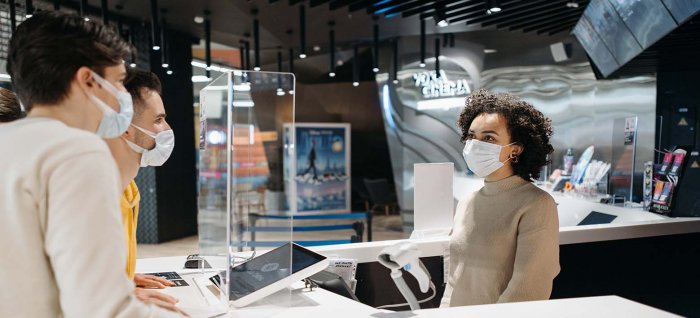
I am proud of what we have achieved together and pleased with the energy that our employees bring to the company. Brands have access to more and more data on customers' consumption habits, which allows them to observe their behavior and to be able to quickly adapt customer relationship strategies. employees bring to our company, to our loved ones and to our country, Morocco
Kenza Ben Driss
The health crisis linked to COVID-19, which is currently affecting the entire world, has disrupted certain aspects of the customer experience and customer relations. Enterprises had to make rapid transformation and changes in strategy. To -Beyond the health crisis, it is the ability to adapt quickly that will be decisive for companies.
This historical upheaval also leaves deep traces for brands that go beyond the period of the health crisis. For them, it implies transformations, changes in strategy and even restructuring.
Lockdown policies have led to profound changes in consumption patterns. Within a short period of time, consumers had to adjust to travel restrictions. At the same time, companies have accelerated the digitization of customer journeys, customer relationships and, more generally, customer experience.
The challenge for the companies was to try to compensate for the drop in traffic in physical shop by relying on digital. This is particularly the case in the retail sector where digital channels have at times replaced physical channels, allowing brands to retain their customers while ensuring their health security.
But new models have also emerged
Going digital
- During this period of health crisis, the stakes of retailers on the digital channel are threefold :
- Retain new customers by offering them, for example, personalized loyalty programs,
- Preserve the relationship with existing customers who are looking for reassurance,
- Understand why some clients have left by analyzing their customer paths and learning from the shortfalls.
A post-lockdown study, conducted by Harris Interactive, suggests that the digital channel has been widely favored by telecom operator customers. The main expectations of customers through digital channels are to get a quick response, and to perform certain acts autonomously while benefiting from the comfort of performing the procedure remotely.
In order to meet new customer expectations, companies are relying on new models to offer a virtually uniform experience across different channels.
Indeed, even when shopping online, customers still want to have a “humanized” relationship. As a result, many new devices have been adopted to meet new needs and expectations, changing the customer experience.
In-store pickup: drive, click & collect to reduce human contact
During their period of closure, many retailers had to reorganize their stores and their online shopping websites. In-store pickup, drive and click & collect enabled consumers to reserve or order products online and pick them up in store. They give customers the opportunity to save on shipping costs and to make purchases in compliance with health regulations.
Brands such as Fnac-Darty have been offering this service since April 2020, giving customers the opportunity to purchase computer products or household appliances in drive mode, while continuing to benefit from the assistance of an upstream salesperson by phone.
….And time of appointment
Some retailers have relied on in-store appointments to make the passages more flexible. Consumers reserved appointment slots online and selected the design, thus allowing the store assistant to prepare for the appointment as best as possible in advance.
The customer experience has been totally transformed: assistants no longer respond to customers who come in spontaneously, instead, they devote themselves entirely to their appointments.
Today, digital technology makes it possible to apply this appointment strategy. It is really about creating a proximity between a customer and the brand and by placing the customer at the heart of the relational strategy, thus making it possible to develop the perfect knowledge of him and to offer him, at the right time, the proper products and services.
Update your omni-channel customer paths
The challenge for brands is now to reconcile both the needs of digital enthusiasts and the needs of the real experience. Each of the channels represents much more than a simple interaction with the customer and must be considered as a key moment of discovery and interest. It becomes vital for retailers to offer customers a unified shopping experience. The transition from one channel to another must be as seamless as possible, avoiding disruptions for the consumer. To increase traffic, it has become necessary to create immersive experiences for customers. These immersive experiences are created within new phygital outlets (mixing physical store and digital tools) that offer unique, immersive and memorable shopping experiences.
In conclusion, you need to be able to adopt your customer experience model in real time.
In the future, companies must be able to adapt their customer experience model in real time. Digital will play a key role in driving these changes. Brands have more and more data on customer consumption habits at their disposal, allowing them to observe their behavior and be able to quickly adapt customer relation strategies. Henceforth, the whole question will be to find the balance between digital and physical paths once the health crisis is over.





